New, important discoveries are coming from the Archaeological Park of Pompeii and in particular from the Insula dei Casti Amanti, which last May 28 opened to visits with an elevated pathway offering a brand new perspective on the excavations. Particularly exciting was the discovery of some children’s drawings, which has been given wide prominence in recent days. But the excavations are moving forward and new, exciting discoveries will come. We take stock in this interview by Noemi Capoccia with Joseph Scarpati, archaeological officer of the Pompeii Park.
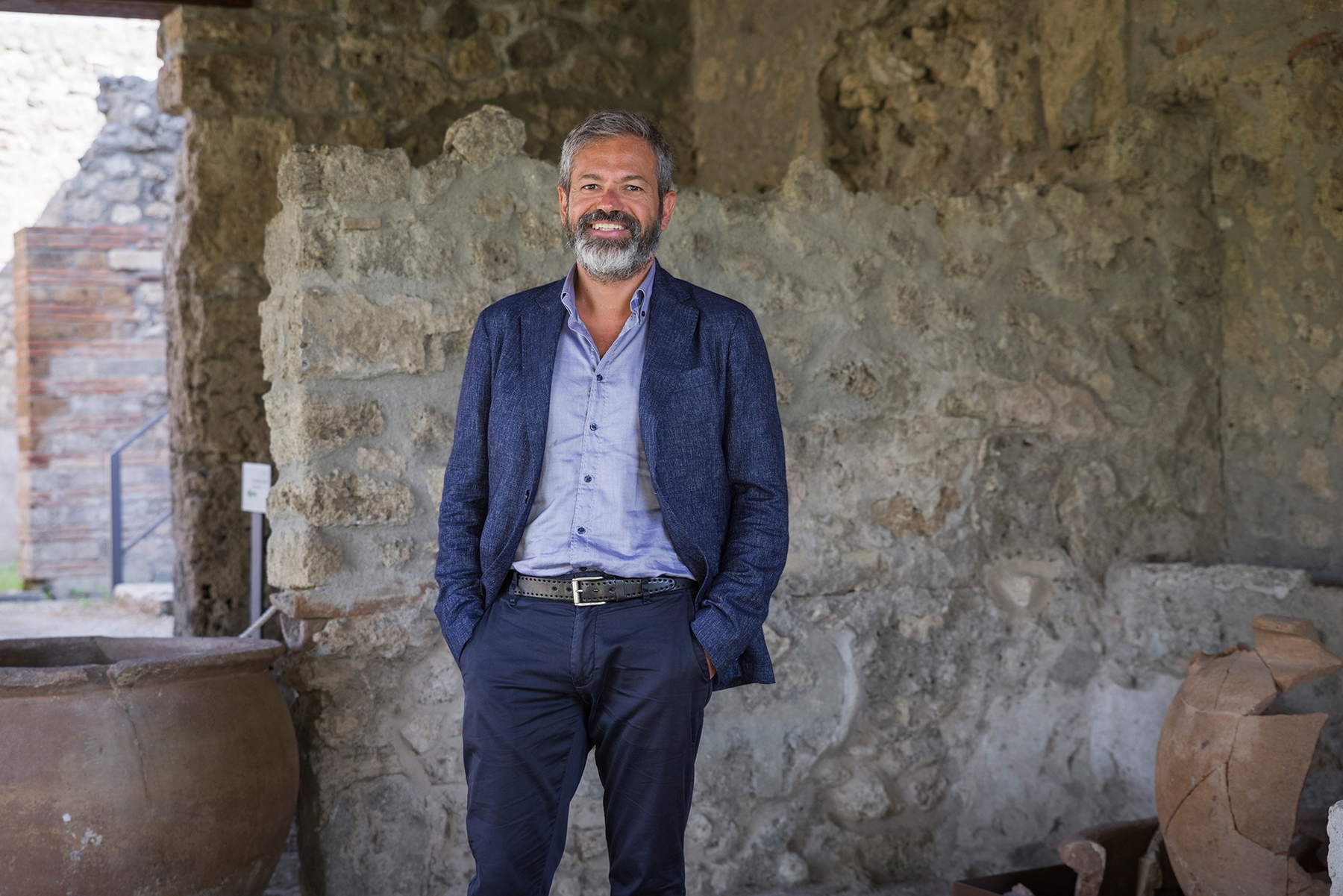
NC. Where does the name Insula dei Casti Amanti come from? To date what spaces and dwellings does its area contain?
GS. The name Insula dei Casti Amanti comes from a small painting found inside a hall of the House of the Casti Amanti. Several figurative scenes were discovered inside the hall, including a banquet scene depicted on the back wall. In the scene, two figures are lying on the triclinium and exchanging a tender kiss. This depiction gave rise to the concept of the Casti Amanti, which gave its name to the house and later, to the entire insula. As for the spaces and dwellings contained in the insula area, we have currently identified four main housing units in Insula 12 of Regio IX. The House of the Casti Amanti, converted into a bakery, faces directly onto Via dell’Abbondanza. Two other building units, named the House of the First Colonnaded Cenacle and the House of the Second Colonnaded Cenacle, also overlook Via dell’Abbondanza, distinguished by the presence of a second floor with colonnaded cenacle structures. It was recently discovered that at least the Second Cenacle Colonnaded House was probably a commercial activity. At the rear of the insula, however, is the so-called House of the Painters at Work, currently the subject of major excavation activities.
The area has, at present, been excavated about half: we are talking about 2,600 square meters. What do you expect from the second part of the excavations? What discoveries might come up based on recent data?
The continuation of the excavations allows us to free up all those rooms left unexplored by the previous interventions, which began in the early 20th century with Vittorio Spinazzola. At that time, large earthworks were carried out to free Via dell’Abbondanza, partially revealing the facades of the insula and the front rooms. Subsequently, since the 1980s, Antonio Varone has directed further excavations, focusing mainly on the two units of the House of the Casti Amanti and the House of the Painters at Work. Currently, we are excavating the rooms that had remained unexplored for various reasons. Previous excavation campaigns did not complete the entire insula, so we now aim to clear these rooms. The House of the Painters at Work is emerging as a level domus with frescoes, revealing a distinct residential vocation. On the other hand, the Second Colonnaded Upper Room complex, where other significant excavations are concentrated, is revealing a later transformed dwelling. During the eruption, a series of interventions were underway that were converting it into a commercial activity. The presence of several stoves and latrines next to it indicates that it was a place where meals and, probably, hospitality were offered to customers, suggesting some kind of inn or catering place. Thus, we have to imagine a transformation into such a commercial activity.
In your opinion, by how soon will the second part of the excavations be discovered? How do excavations of this kind take place? Is it done by blocks or are other techniques used?
The excavations will continue for a few more months, although it is difficult to give an exact timeline. The duration will depend very much on the problems we encounter, since we are not working in an open ground plane with shaved structures. The progression of the excavation depends on the condition of the structures we encounter, so it is necessary to secure the masonry and decorative apparatus as we proceed, ensuring structural stability and preservation of the decorations. We are operating in an area that has already been affected by previous interventions. The initial excavations were conducted by Vittorio Spinazzola starting in 1912, clearing the part of the rooms facing Via dell’Abbondanza. Later, in the 1980s, under the direction of Antonio Varone, most of the rooms of the House of the Casti Amanti and the House of the Painters at Work were freed. In addition, we find ourselves working in an area that was also explored in the Bourbon era, with the presence of tunnels and galleries built during that period. This adds additional challenges to our work, as we have to manage these existing structures. Currently, we proceed by environments, identifying the best logistical way to transport the material and systematically emptying the areas bordered by the walls. This methodology thus allows us to manage the excavation stratigraphically.
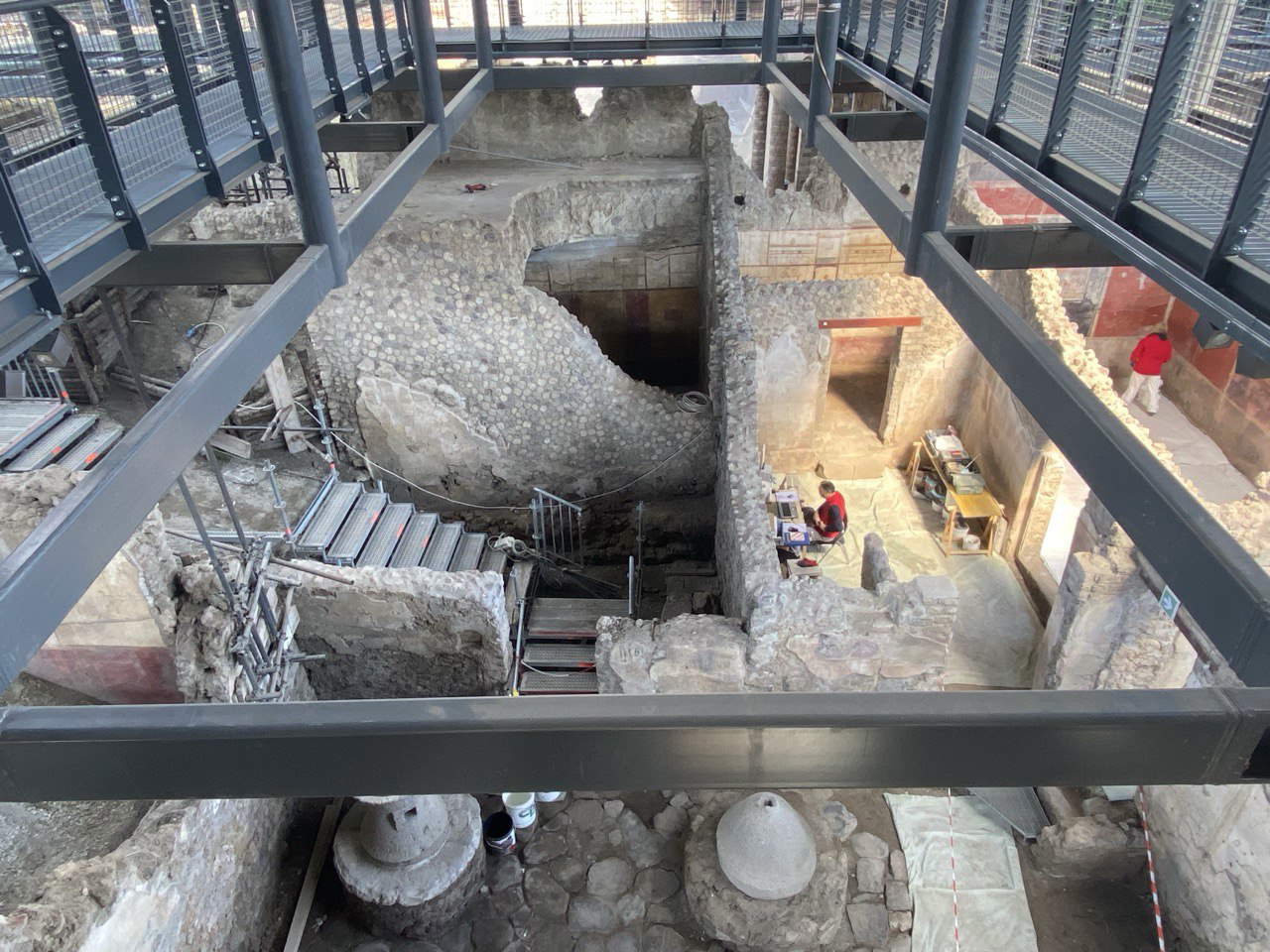
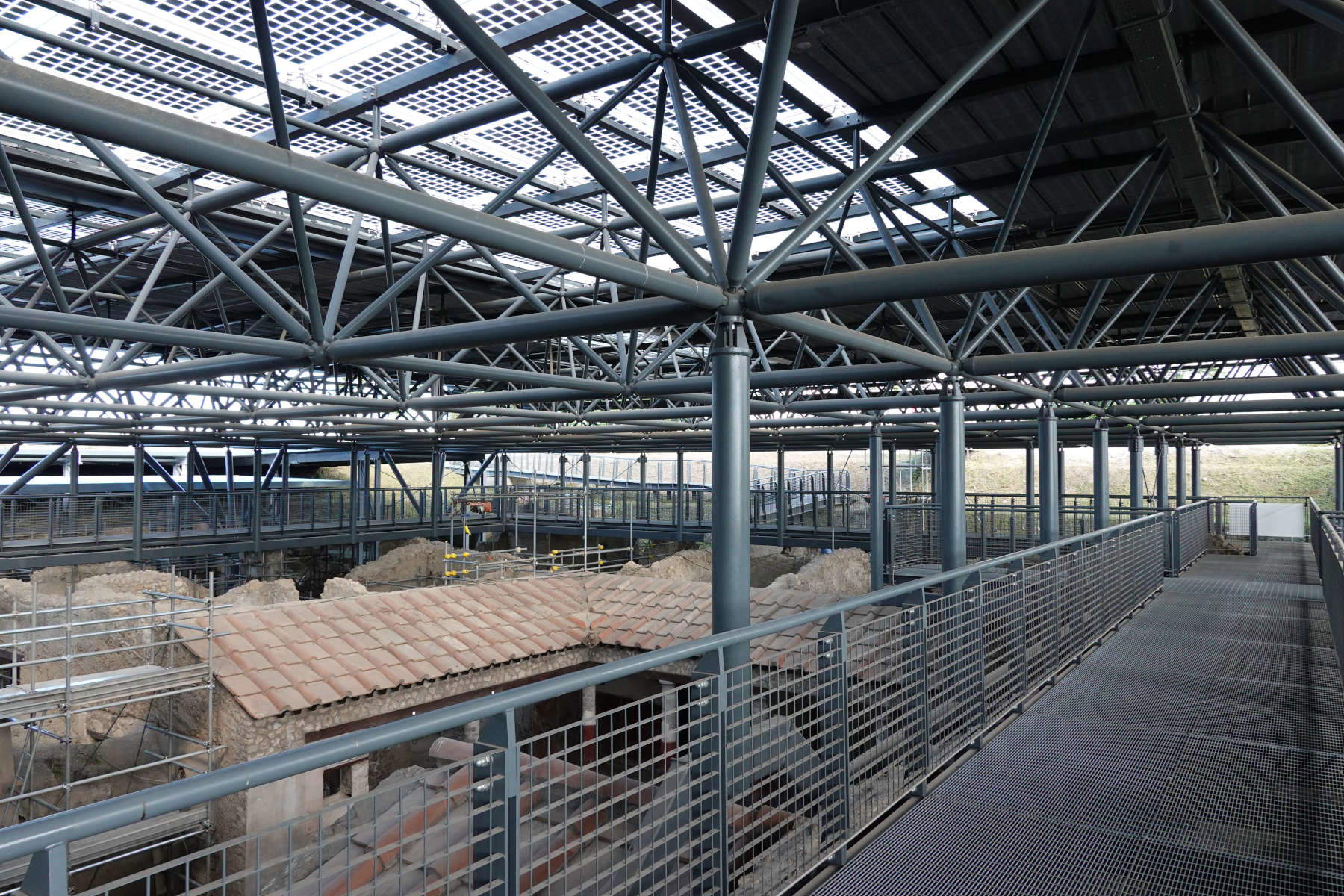
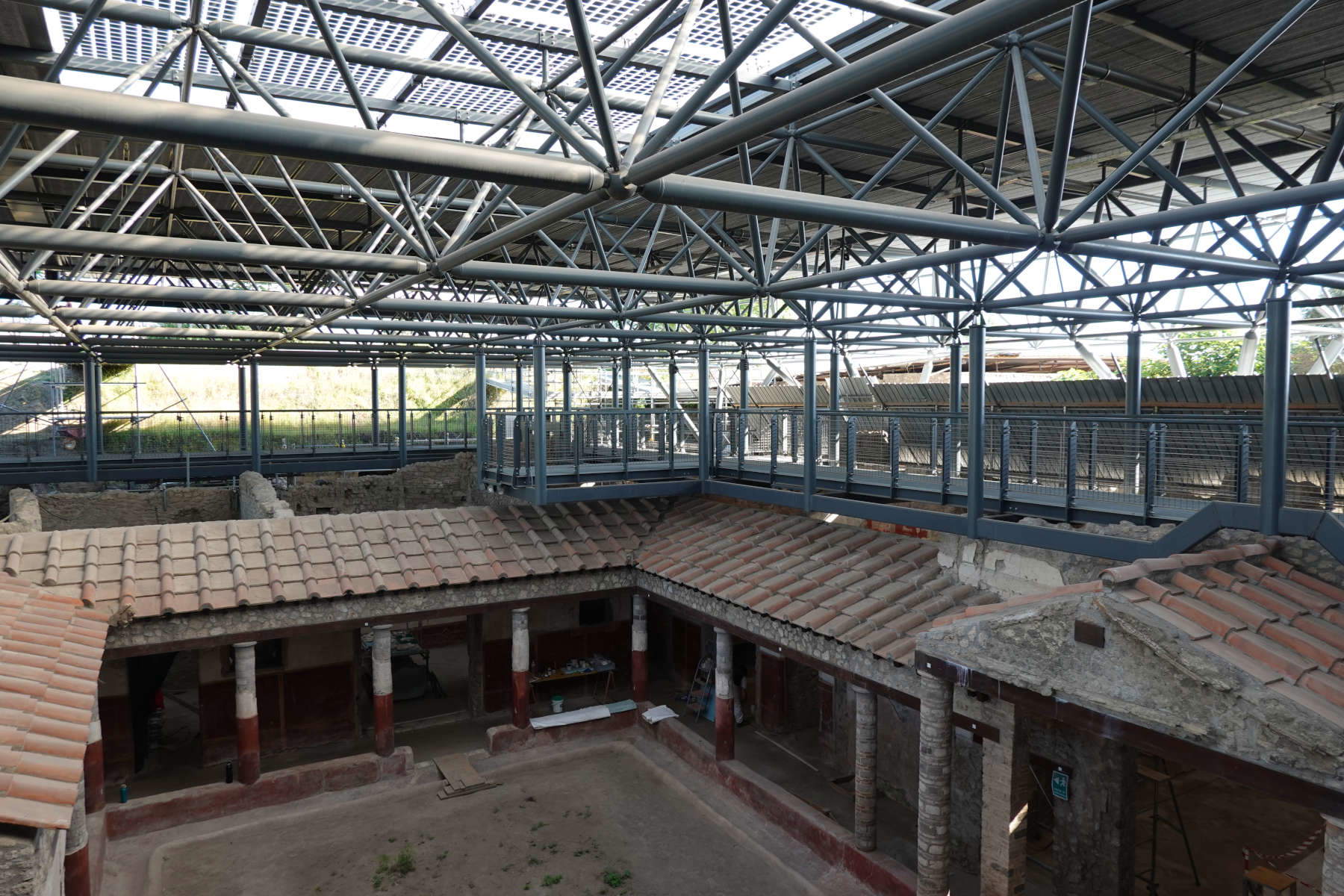
Are there currently anyother excavation sites within Pompeii with excavations and restorations of this magnitude?Yes, there are currently several active excavation sites within the Pompeii Archaeological Park. In addition to the construction site of the Insula of the Casti Amanti, another major construction site is that of Insula 10 of Regio IX. The construction site, which covers more than three thousand square meters, is yielding extraordinary results with the excavation of two real estate units facing Via di Nola: one converted into a bakery and the other into a laundry. A third building unit, located behind the insula, is still being excavated, with some rooms already identified. There are also other active excavation sites, although smaller, but still of great importance. These include the continuation of the excavation of the House of Leda and the thermopolis in Regio V. Outside the walls of Pompeii, but still within the context of the Archaeological Park, the excavation of Civita Giuliana, where a suburban villa is located, and the excavation at Oplontis, at the Villa of Poppea, are open. The latter site aims to clear the great Hall of the Peacocks, part of which lies under the modern road. The excavations represent a period of great fervor within the Pompeii Archaeological Park, with many discoveries contributing to our understanding of life in the ancient city.
Suspended walkways have been designed for visiting the area. To what is the reason for the choice of this exhibition route?
The decision to adopt a single span roof with suspended walkway for the Insula of the Casti Amanti dates back to the 1980s and 1990s. At that time, a temporary cover was installed over the excavations, with a suspended catwalk that allowed visitors to observe the found rooms from above. This solution was designed to provide a panoramic view of the excavations, as the interior of the insula was still subject to various conservation requirements, necessary to preserve traces of the damage caused by earthquakes and the volcanic eruption. Visiting from above proved to be functional, as it allowed one to observe the layout of the rooms without interfering with the props and temporary support structures installed for conservation. With the new design, it was decided to respect this initial approach. Consequently, a single span roof was designed, allowing the installation of a suspended walkway. This design allows for maintaining a bird’s-eye view of the excavations, providing a complete overview of the environments found. Once the work is completed, the catwalk will allow visitors to see all the different environments from above. However, this does not rule out the possibility of scheduling canonical visits inside the rooms themselves in the future, as is the case with other Pompeian houses.
How will the route from above help to provide an innovative and comprehensive view of the entire insula, a new public use and a different approach to public archaeology?
Since May 28, we have opened the walkways to visitors to the Archaeological Park. Visitors can already now climb the walkways and visit the insula, although excavation and restoration work is still ongoing. Upon completion of the entire project, with excavation and restoration work completed, it will be possible to take a one-of-a-kind tour of Pompeii. Unlike the canonical visit inside Pompeii’s houses, this top-down perspective will allow visitors to observe the rooms from a different viewpoint. This approach offers a panoramic view that makes it easier to understand the layout of the spaces, almost like looking at a floor plan from above but observing the actual rooms. This new perspective will make the perception of the spaces immediate and help create an alternative and more understandable experience for visitors. It will be possible to better appreciate the distribution of rooms and more intuitively grasp the organization of spaces within the insula.
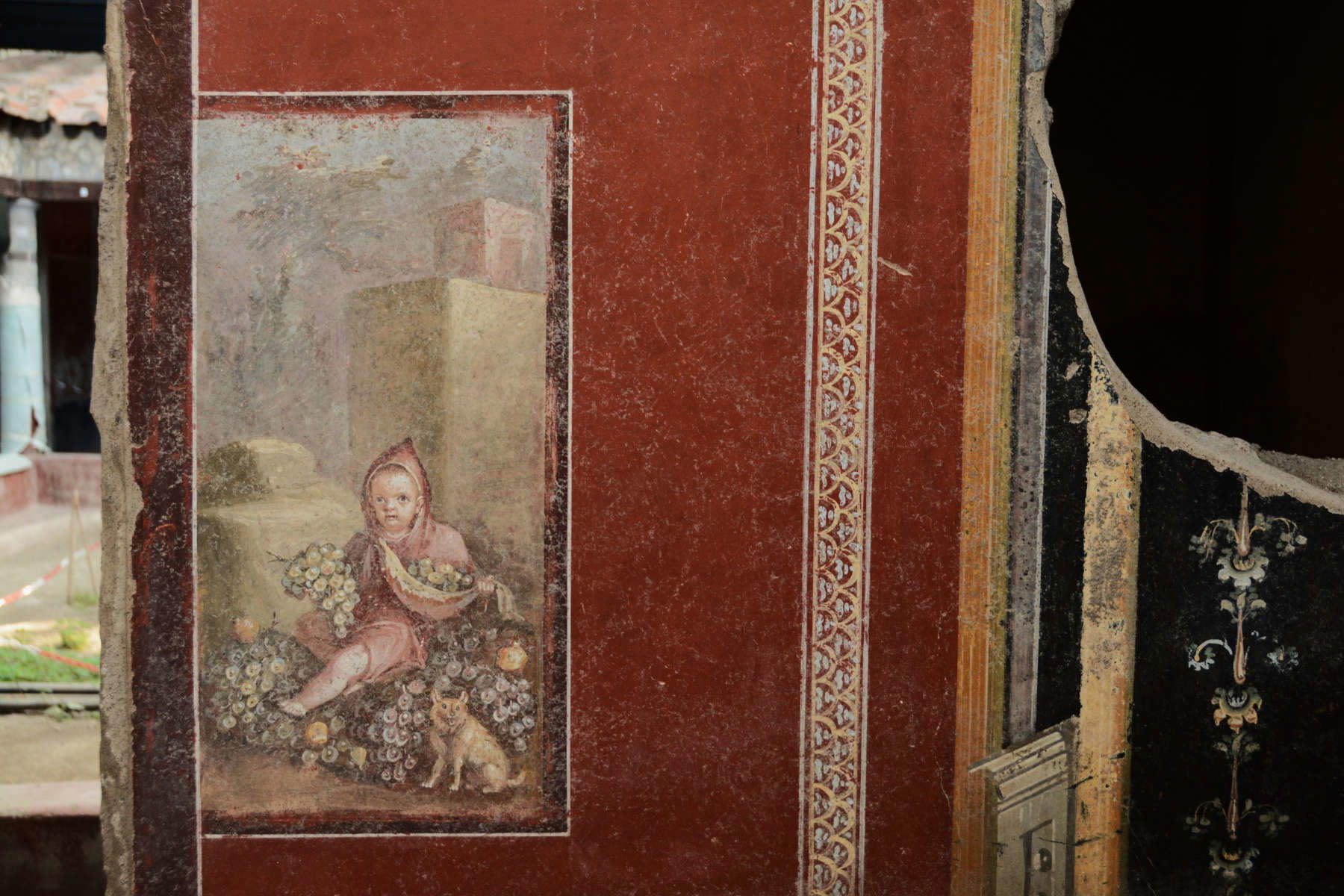
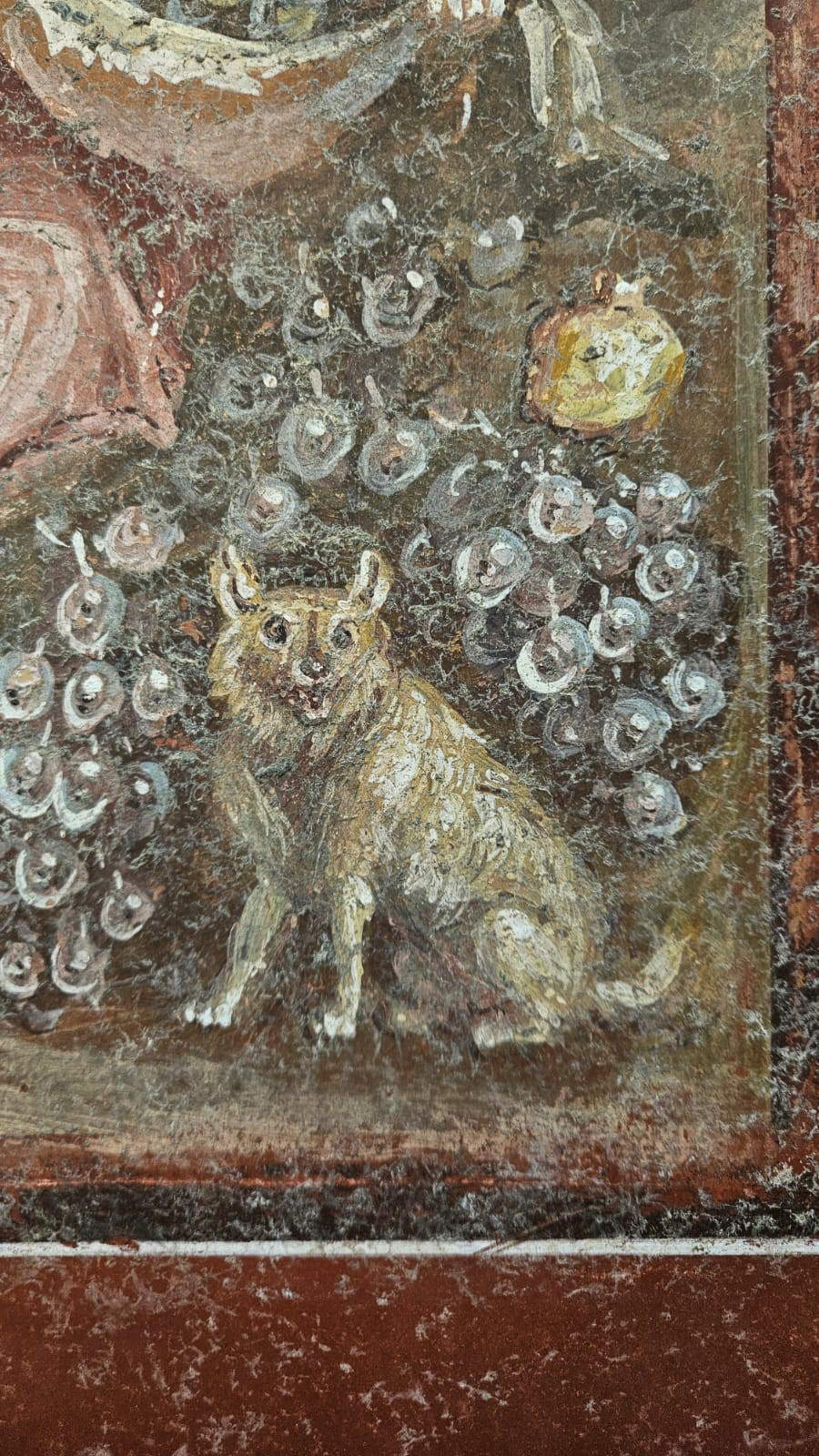
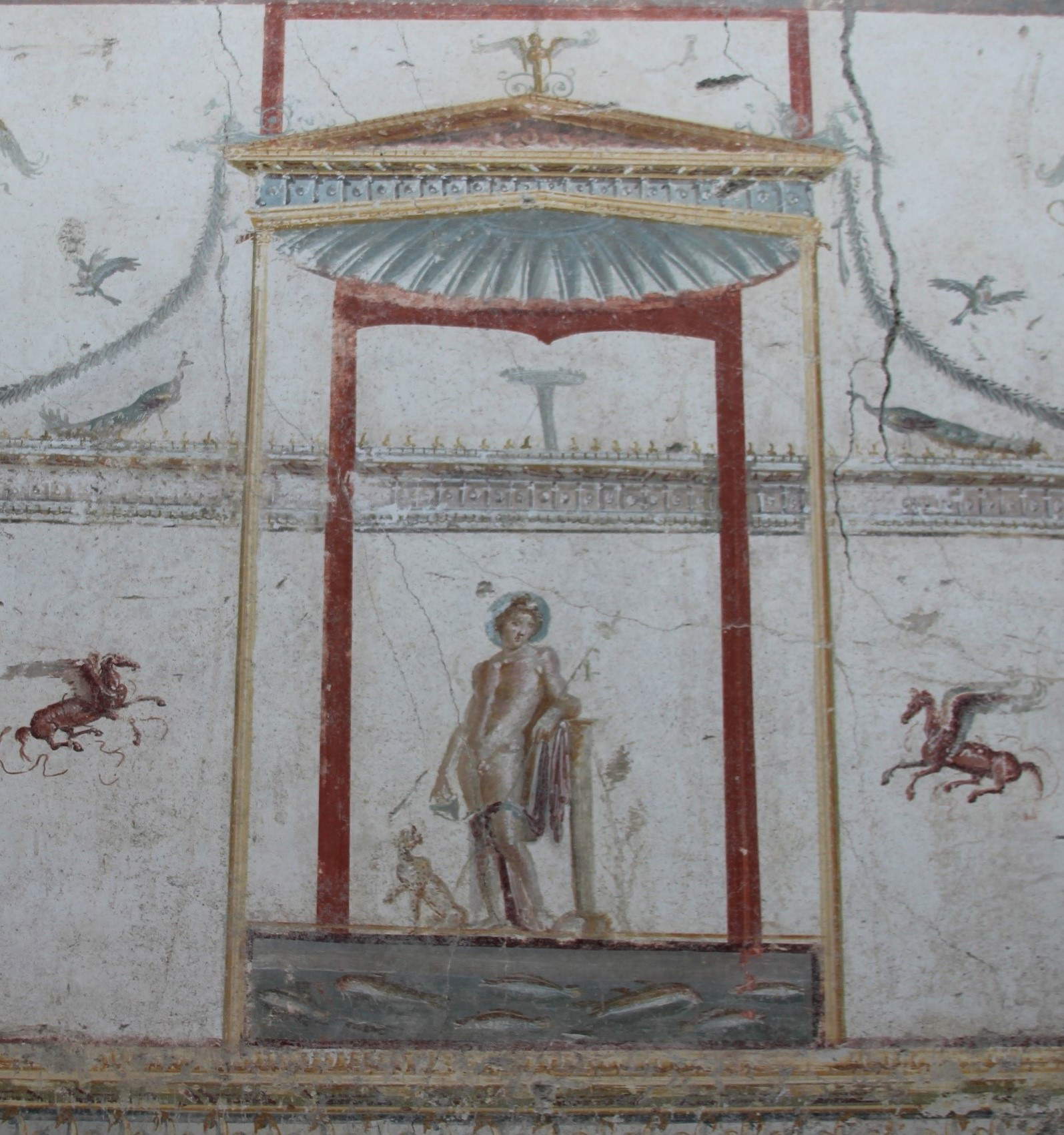
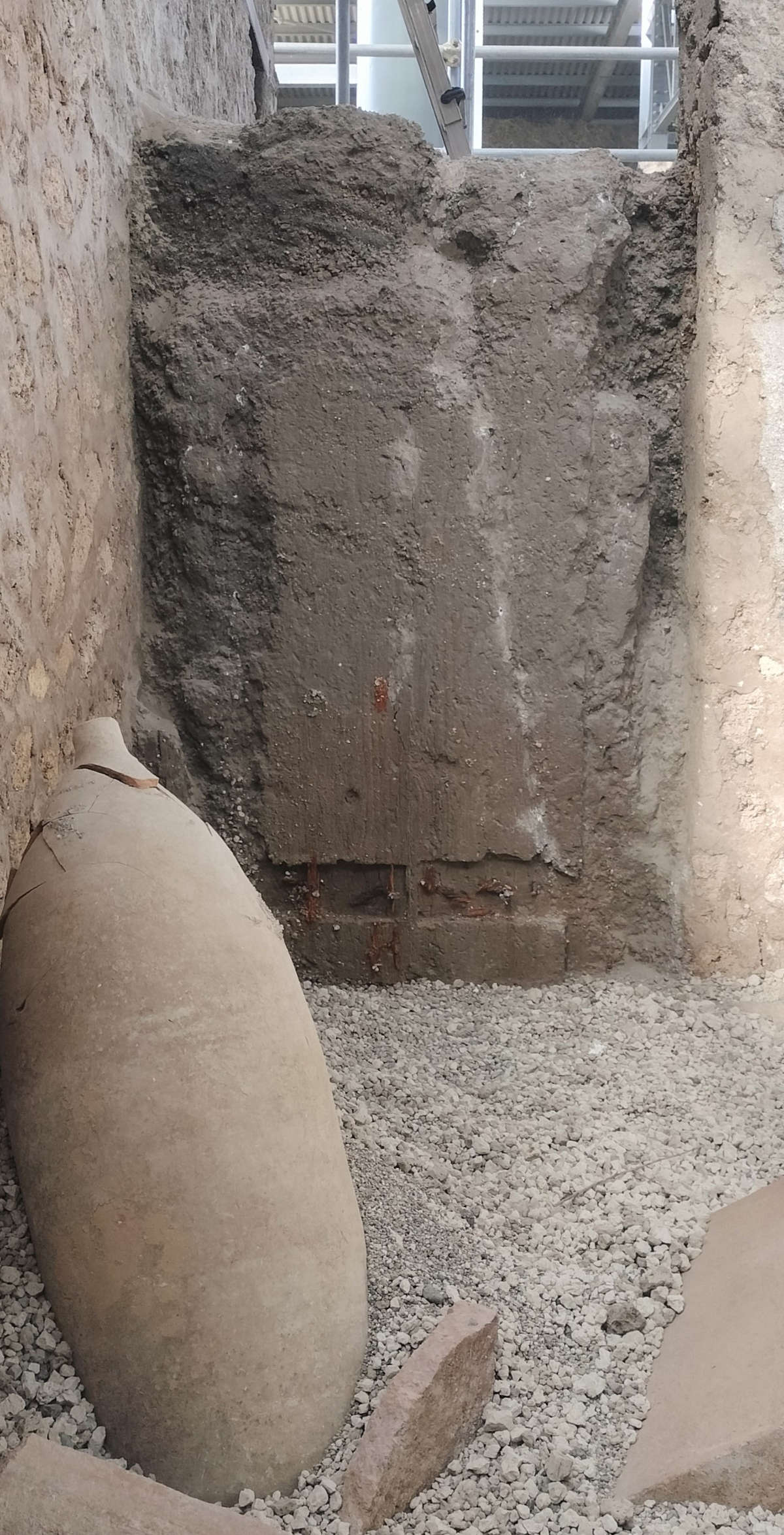

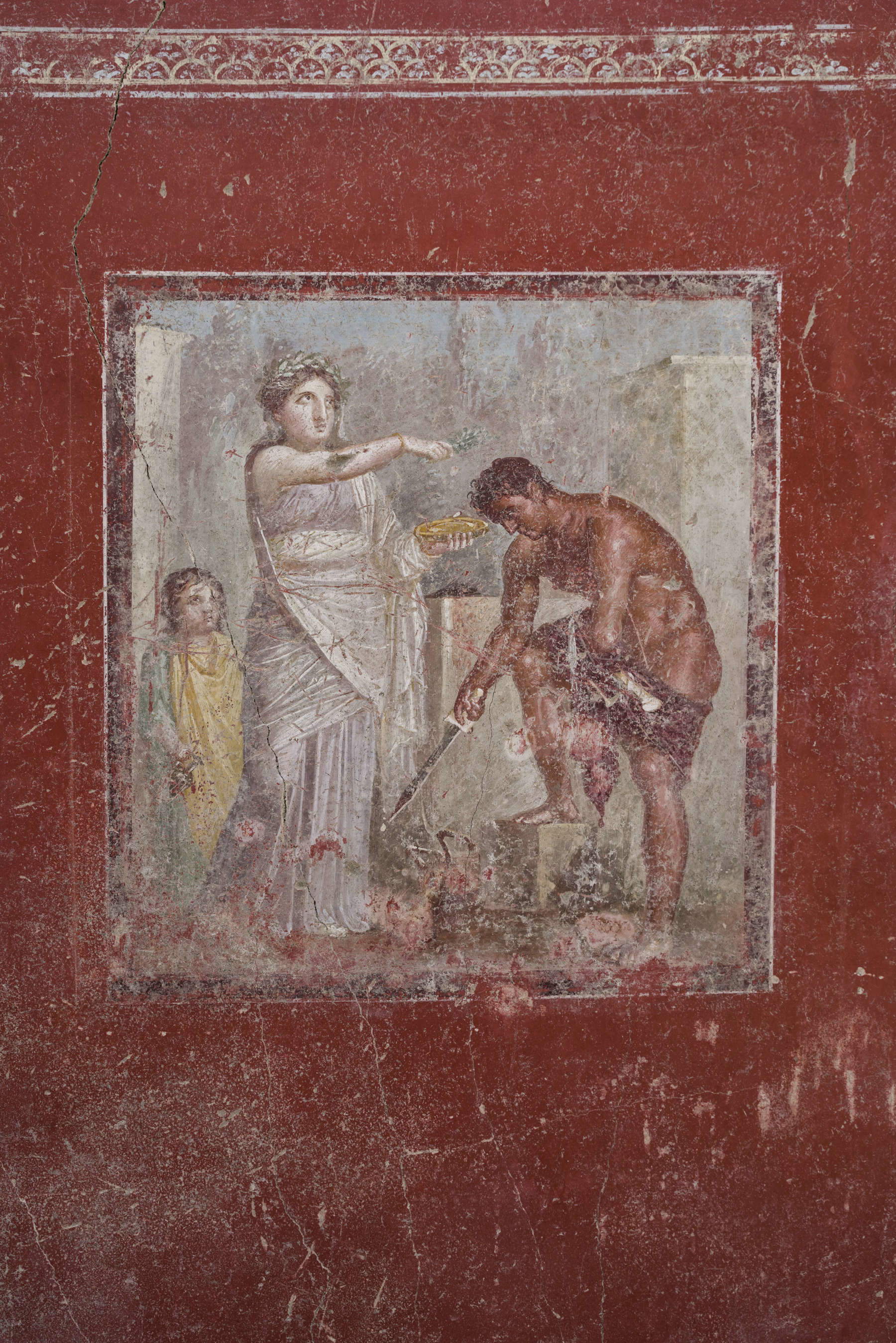
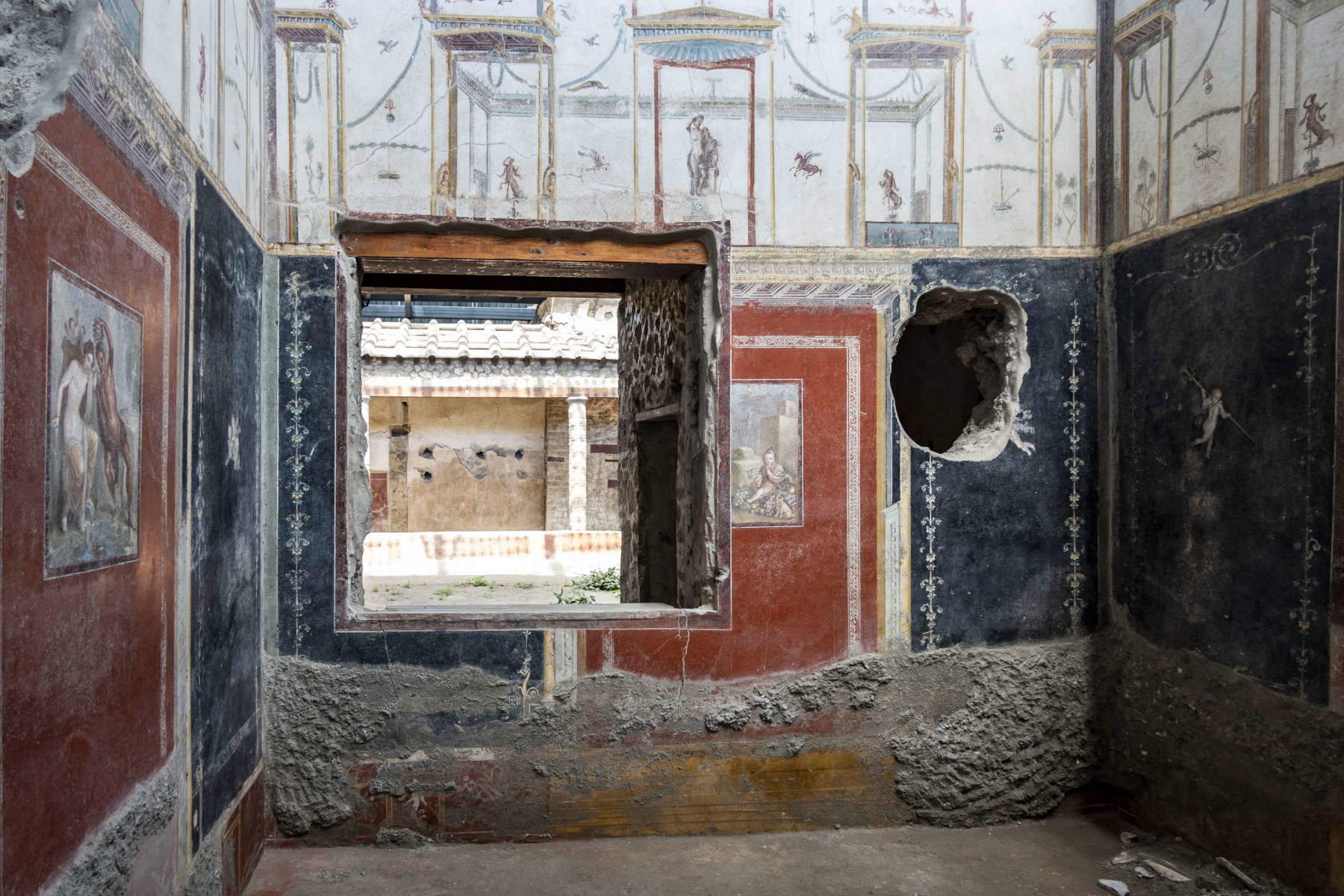
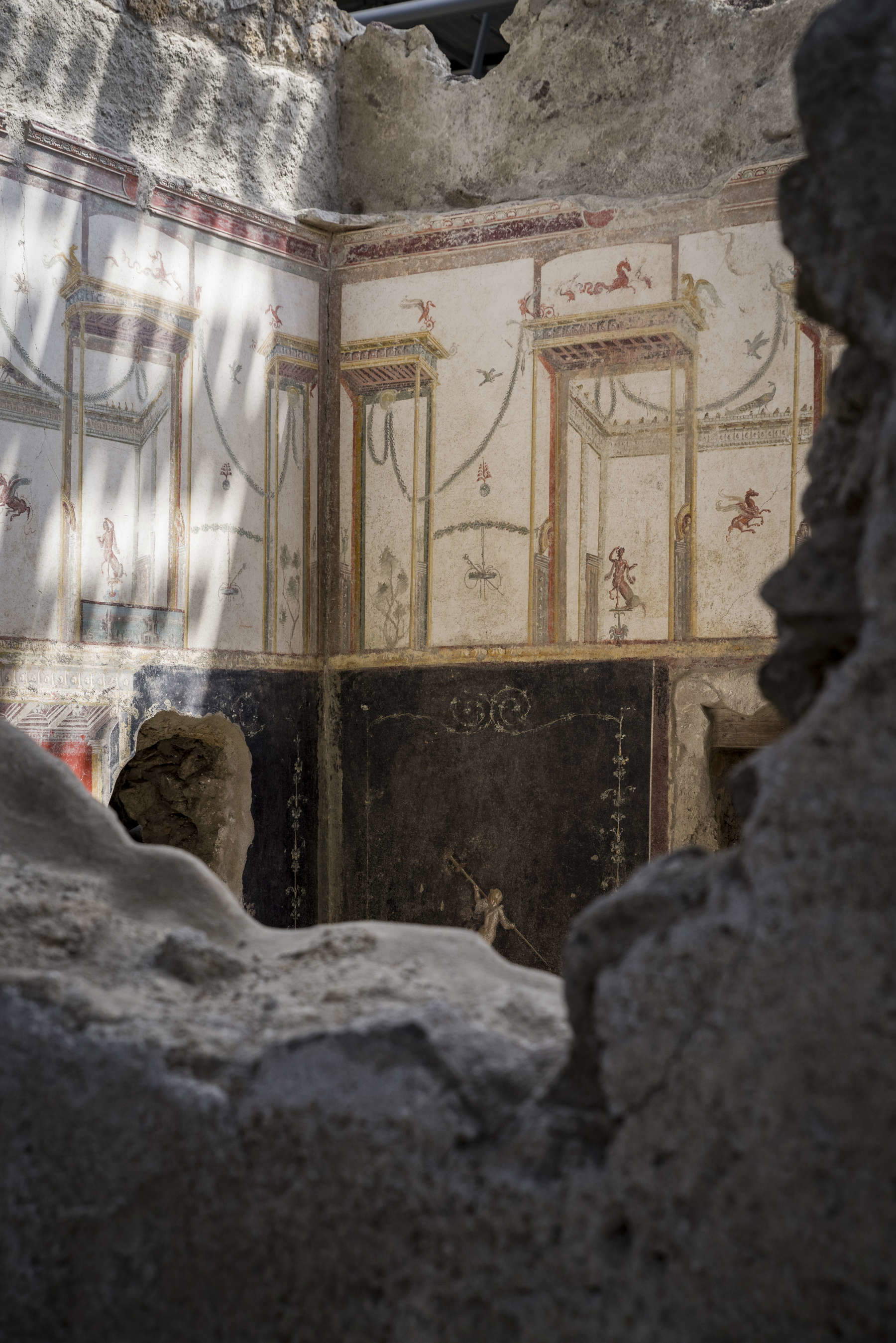
Why did you decide to leave some portions of geological sections related to the stratigraphies derived from the eruptions exposed?
The decision to adopt a suspended walkway cover during excavations in the late 20th century was dictated by the need to better communicate to visitors the dynamics that had led to the destruction and burial of the city of Pompeii. After years of less intensive excavations, beginning with Amedeo Maiuri’s interventions, the resumption of a major season of excavations with the House of Julius Polybius and the Insula of the Casti Amanti offered an opportunity to explore and liberate new portions of the city, highlighting the various phases of the natural disaster. This choice, focused on a didactic intent, aimed to show visitors the consequences of the eruptions and earthquakes that had probably preceded and accompanied the eruption itself. During the excavation, these dynamics were very evident, but with the passage of time and the need for conservation work, it becomes more difficult to maintain this clarity. For this reason, proper communication is essential to help visitors understand the significance of the alternating layers of lapilli and compacted cinerite, revealing the different events of the eruption. Similarly, it is important to explain situations of collapsed walls, not only due to the force of the eruption, but also due to fractures caused by earthquakes. For example, some masonry shows traces indicating that the walls did not fall due to volcanic ash pressure, but due to seismic shaking that occurred during or immediately before the eruption, when the structures were already partially buried by lapilli. These kinds of details grant us a more complete and understandable view of the forces that affected Pompeii and enhance the educational experience for visitors.
Let’s talk about the charcoal sketches found on the walls. What details have emerged about the drawings made by children, the mythological paintings and the two victims of the eruption found in the insula?
In recent excavations still underway in the Second Upper Room Colonnade house, we found charcoal drawings that immediately appeared to us as works made by children. Some of these drawings are found at a considerable height on the walls, and thanks to the stratigraphic record we understood that the children had probably climbed on small shelves of which no trace remains as they have decomposed over time. The scenes depicted, with unmistakably childlike features, immediately made us think of the intervention of children. We involved neuropsychiatrists from the Federico II University of Naples who confirmed that some drawings were made by children between the ages of 7 and 8, while in other cases, such as the outline of a child’s hand, it was determined that it was a child of about 5-6 years old. It is likely that these children were inside the house while work was in progress and took advantage of the shelves to climb and draw on the walls. The scenes mostly depict hunting and fighting scenes, while on another wall are drawings that recall marine scenes, with boats rubricated in red rather than charcoal. In the other housing unit, the Painters’ House at Work, two victims were found instead in the entrance space of the house, which overlooked the side alley. Presumably, these people tried to take refuge inside the house during the eruption, but they were stuck in the fauces, the entrance space, because the doorway to the atrium was barred. This space was covered by a small loft with amphorae, which collapsed, crushing the victims. Studies on the skeletons are still ongoing and will allow us to better understand the dynamics of their deaths, whether by crushing or other causes. The House of Painters at Work revealed very beautiful rooms with interesting pictorial decorations, including some small paintings with mythological scenes. Among them, a scene with Perseus and Andromeda and another with the purification of Orestes have already been studied by iconography experts. Another special feature within these rooms is a small picture depicting a child dressed in a red tunic and hood, among bunches of grapes and pomegranates, accompanied by a small dog. This figure has aroused much curiosity because of its rare iconography, which could represent a deceased child bound to the owners of the house and depicted in a divine apotheosis, perhaps of Dionysian character, considering the presence of Dionysus on the opposite wall. In any case, these interpretations are still under study and will require further investigation to be fully understood.
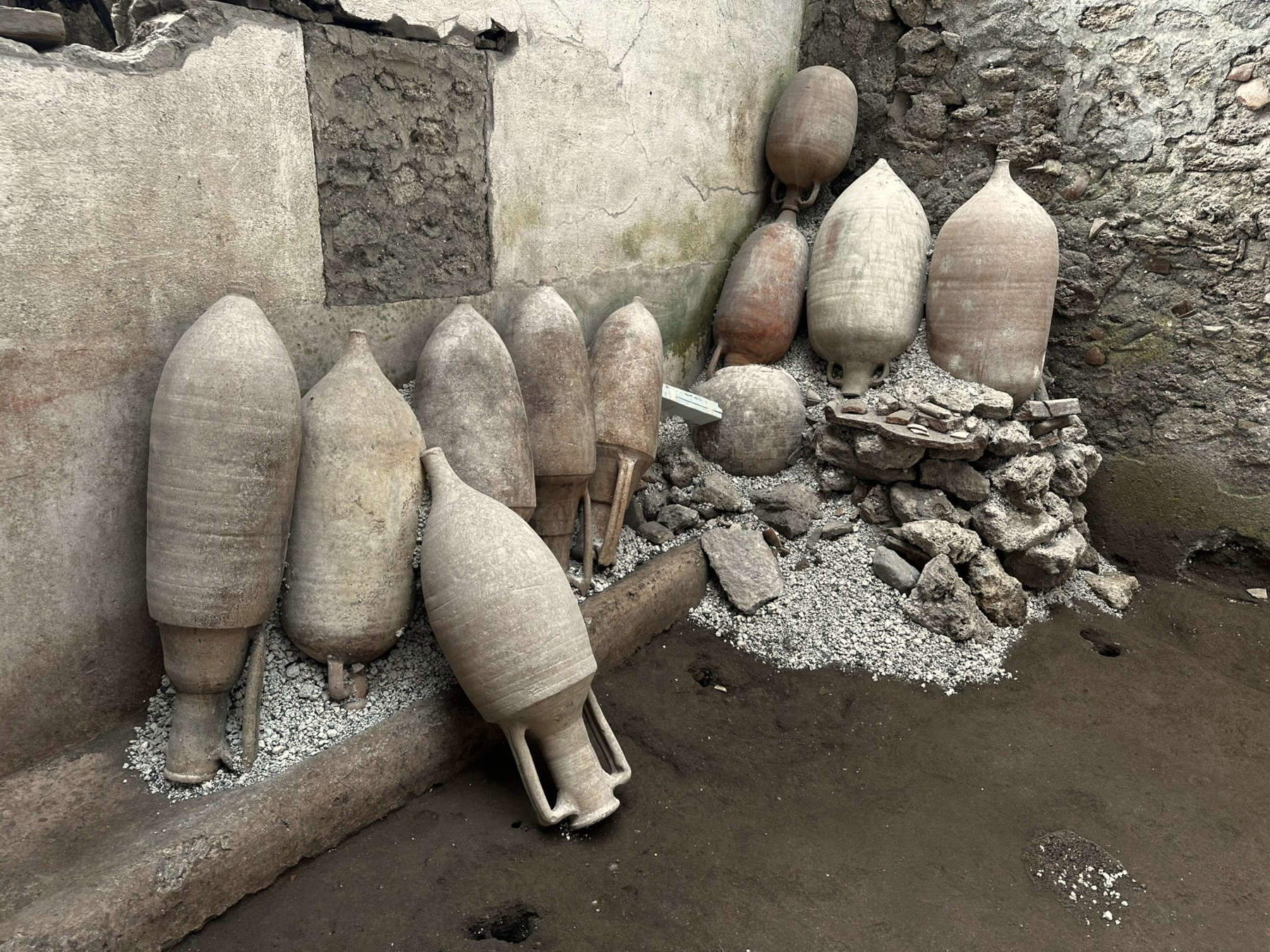
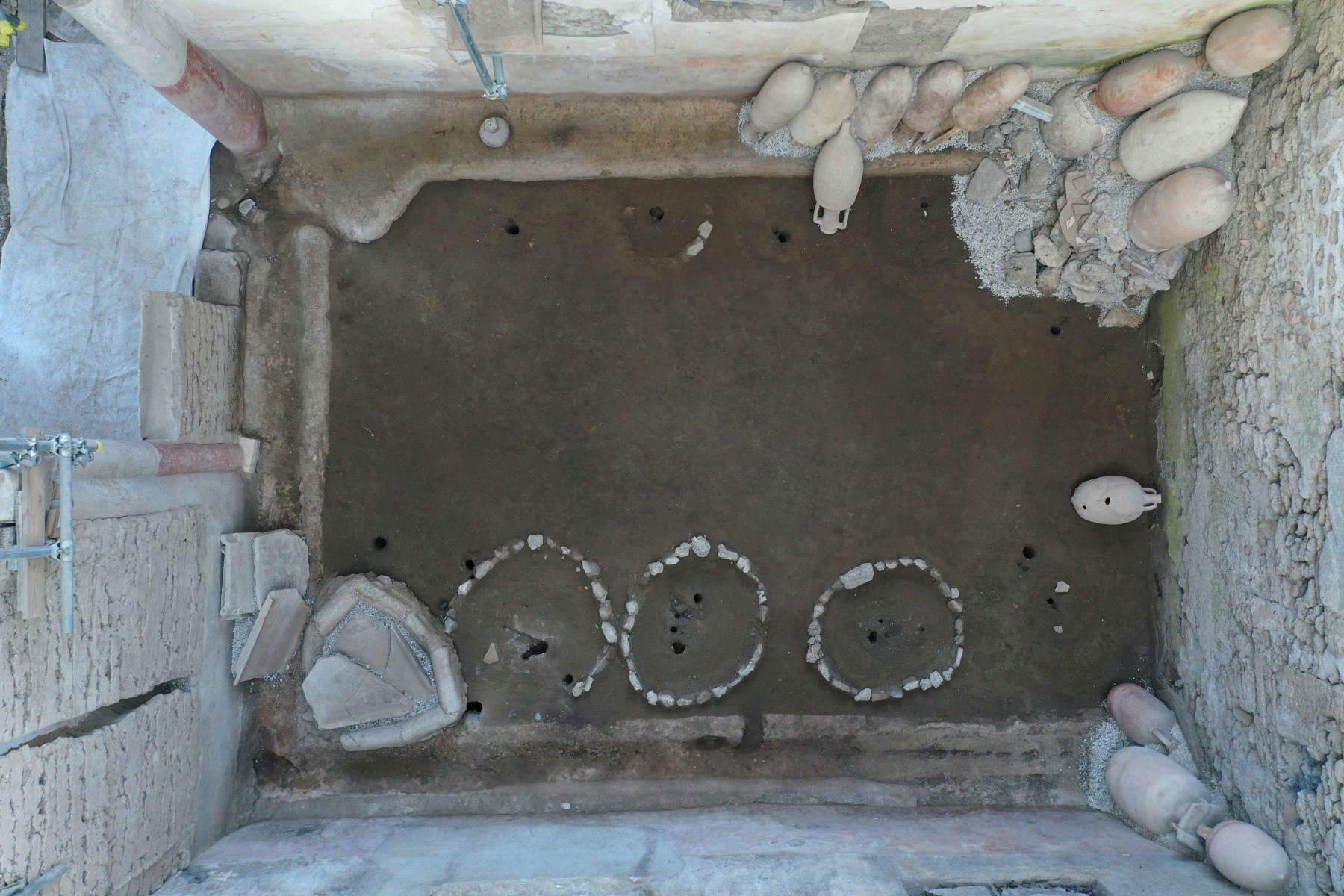

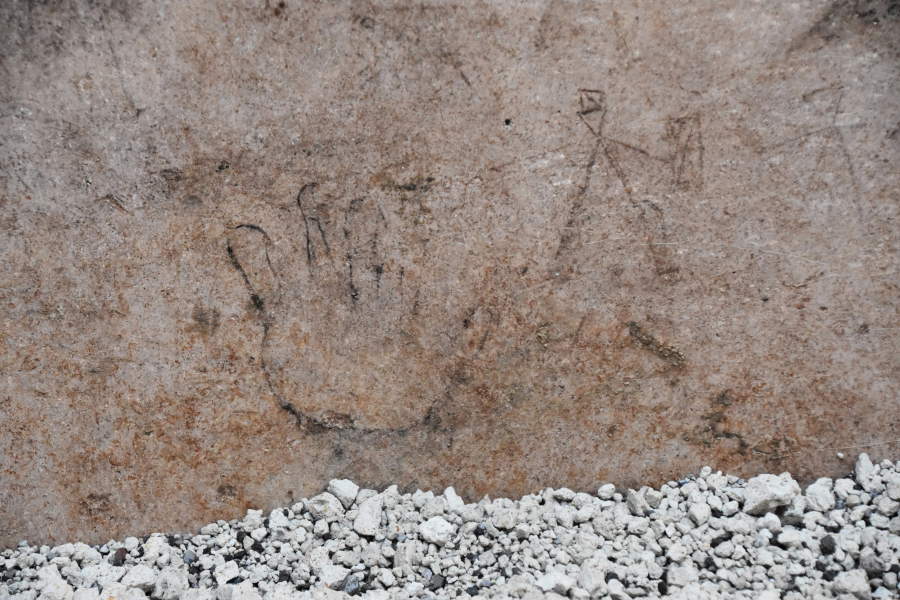
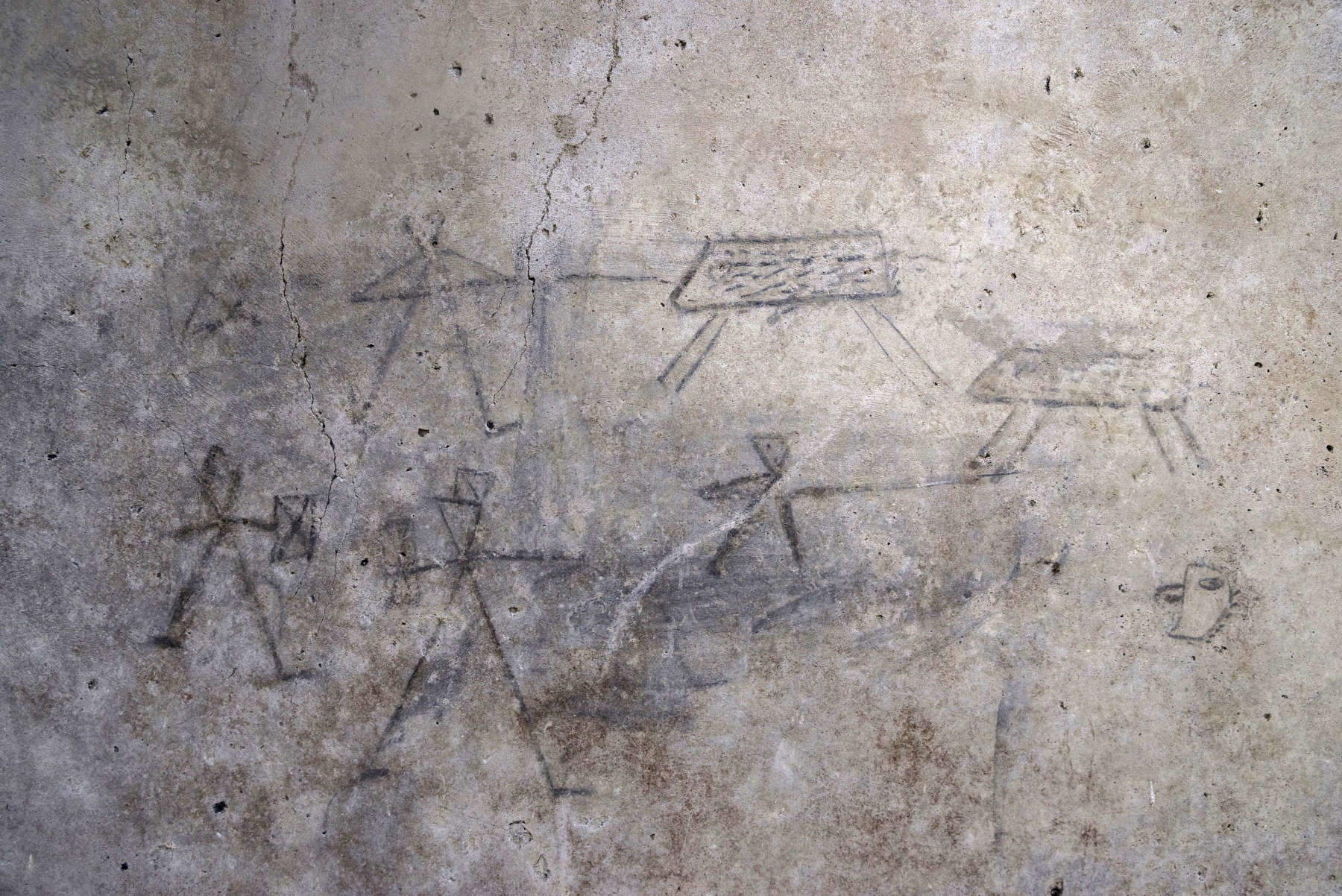

What was your first thought related to the discovery of the children’s drawings found in the Upper Room house?
From a personal point of view, the discovery of the children’s charcoal drawings was particularly exciting. This find allowed us to vividly perceive the everyday life of those times, imagining the children inside the building where work was being done, of which we recovered very obvious traces. We found walls that had probably been raised recently and did not yet have the outer covering, built quickly and with simple techniques. The idea that these children were wandering around in a buzzing environment, leaving their traces on the walls, gave us a vivid picture of daily life in the houses of Pompeii just before the eruption, making the find very emotionally moving. The discovery of the frescoes, although also surprising and of great value, was experienced differently. We found a virtually intact room from the point of view of the walls, with the stucco frame and a complete iconographic context, despite a breach caused by Bourbon excavators. It was exciting to bring these artifacts to light, but many frescoed walls have been discovered in Pompeii over the years. The emotional impact of the children’s drawings, on the other hand, was unique and particularly meaningful. These findings have thus allowed us to better understand the everyday life in Pompeii just before the catastrophe.
Based on the charcoal sketches of gladiators and boars, director Zuchtriegel argues that children were exposed to the violence of the amphitheater from an early age. How was it possible to understand that they were drawings made in direct vision and not drawn from pictorial models?
The walls of Pompeii are full of graffiti and charcoal drawings, found on almost every wall. This indicates to us that the inhabitants wrote and drew extensively on the walls, often representing what they saw. Recently found charcoal drawings, for example, depict hunting or fighting scenes. It is hard to imagine that young children participated in hunting parties with adults, so it is more plausible that these scenes were inspired by what children saw in the amphitheater, where fighting took place, or during training in the gymnasium. The director of the archaeological park emphasized this in his talk, pointing out that children tended to draw what they saw that involved them emotionally, much like today’s children who reproduce what they see on television through sports. Therefore, it is reasonable to assume that the children of Pompeii drew scenes inspired by the spectacles they observed in the amphitheater, rather than by direct hunting experiences. In fact, there is little evidence to suggest that these drawings were based on painted scenes, suggesting instead that children may have had access to the amphitheater and witnessed the performances directly. This direct contact with combat and hunting scenes would explain why they then reproduced them on the walls of their homes.
Warning: the translation into English of the original Italian article was created using automatic tools. We undertake to review all articles, but we do not guarantee the total absence of inaccuracies in the translation due to the program. You can find the original by clicking on the ITA button. If you find any mistake,please contact us.